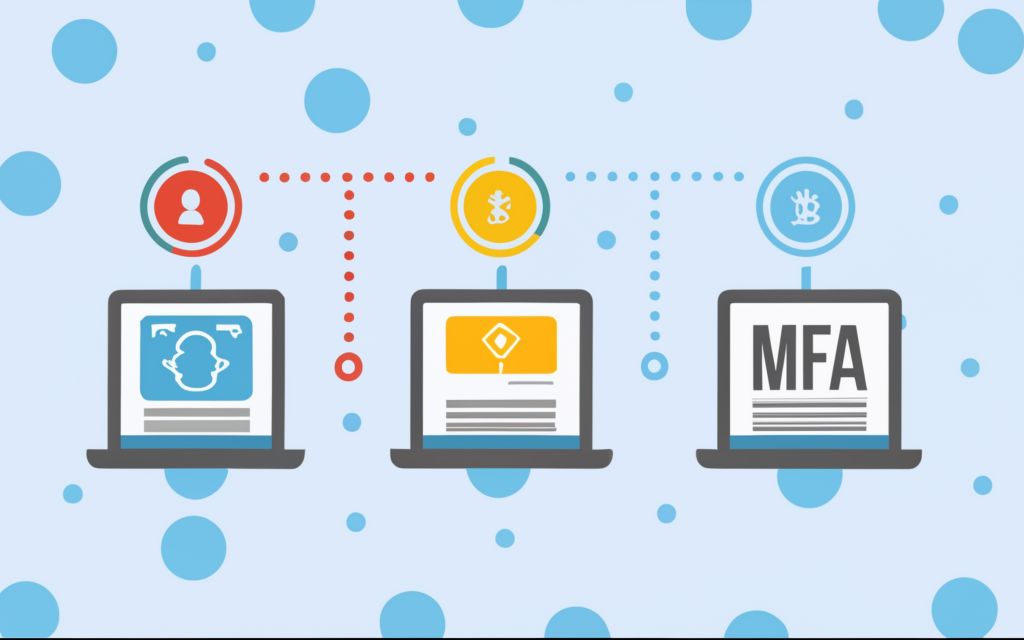The Future of Cryptocurrency Security: Insights from Protectimus Experts

The Future of Cryptocurrency Security: Insights from Protectimus Experts
Introduction to the Evolving Landscape of Cryptocurrency Security
The digital finance realm is transforming at a blistering pace fueled by cryptocurrency innovation, ushering in both immense opportunities and risks for investors. As veterans in cybersecurity, Protectimus experts recognize the integral role advanced security plays shielding digital asset growth opportunities against intensifying threats.
Through decades securing sensitive systems and repeated trial-and-error in the cryptocurrency niche, Protectimus researchers gained valued insights into safeguarding blockchain investments against modern attacks. Findings underscore the critical need for continuous security advancement matching the speed of virtual asset evolution.
Protectimus contributes through leading development of robust authentication methods, integrity protections and threat detection controls purpose-built for the cryptocurrency sphere – furnishing sustainable, maximized defense of valuables assets as the industry matures.
The Critical Role of Multi-Factor Authentication
Experts unanimously agree multi-factor authentication constitutes foundational protection for cryptocurrency investors by significantly expanding verification requirements beyond vulnerable lone passwords.
As cyber threats advance, analysis projects further MFA refinements incorporating more sophisticated methods matching heighted ingenuity of social engineering, phishing and malware attack vectors criminals employ.
By integrating additional identity confirmation tools like security keys, biometrics and one-time-passwords into the login process, findings expect strengthened MFA implementations to become standard protecting access for all cryptocurrency accounts over the coming decade.
Advancements in Adaptive Authentication
Beyond baseline MFA, Protectimus researchers also underscore the increasing importance of adaptive authentication – verification processes customizing security prerequisites per users’ discrete risk profiles. Findings expect AI-powered adaptive systems to become more prevalent by intuitively detecting suspicious activity patterns and escalating identity checks accordingly in real-time.
For example, unfamiliar overseas login attempts or abnormal transaction behaviors may necessitate biometric confirmation before approval. By intelligently responding to each discrete event’s unique context, experts forecast dramatic fraud reductions securing cryptocurrency finance thanks to wide adaptive authentication adoption.
The Emergence of Quantum-Resistant Cryptography
While robust presently, findings revealed current encryption methods face potential compromise by quantum computing now nearing viability. As such, Protectimus contributes pioneering research into quantum-resistant cryptographic algorithms seeking to maintain long-term integrity of stored and transferred virtual asset data against technological progress.
By proactively addressing this looming threat before concrete risks emerge, Protectimus innovations ensure cryptocurrencies and blockchain ecosystems withstand encryption advancements that otherwise jeopardize transaction security in the future – solidifying long-term viability of investments as computing continues advancing.
Leveraging Blockchain for Enhanced Security
Additionally, Protectimus research examines unique security applications of blockchain technology itself beyond cryptocurrencies. Immutable ledger transaction histories and transparency of participants’ identities foster accountability securing networks.
Experts are actively exploring infrastructure integrations allowing blockchain to play more integral authentication and integrity roles – from confirming identities during logins to certifying software and hardware integrity before transactions. By capitalizing on innate blockchain strengths, findings expect noticeable security boosts.
The Integration of Biometric Security
Experts also revealed insights around integrating biometric verification like fingerprint and facial recognition more prominently into cryptocurrency protection schemes – both securing account access and transaction authorization.
Findings expect biometric-gated fund transfers becoming increasingly commonplace as ease-of-use improves thanks to standardized platform integrations, allowing users confirming deals via scanned prints or facial recognition in lieu of codes or passwords exposed to theft.
Protectimus researchers are also investigating means of storing encrypted biometric templates distributed across blockchain nodes, eliminating centralized databases vulnerable to compromise under this model.
Innovations in Hardware Security Tokens
Regarding hardware protections, discoveries predict advances producing durable, tamper-resistant devices able to withstand more sophisticated attacks aimed at extracting keys or authentication factors stored on physical tokens.
Waterproof, shock-resistant and chemically inert metal casings able to safely self-destruct internal encryption chips if forceful access is detected demonstrate the durability and resilience improvements expects in next-generation cryptocurrency hardware security tokens currently under development.
Smart Contracts for Automated Security
Experts also revealed increased reliance on smart contracts automatically enforcing protective policies tied to transaction contexts pre-determined as higher-risk or thresholds crossed. For example, bindings may mandate added MFA confirmation or transaction-signing for large transfers before wallet software authorizes broadcast.
By designing and deploying flexible smart contracts dictating security prerequisites, findings expect measurable reduction in social engineering attempts successfully exploiting authorized yet distracted users not closely scrutinizing transaction details.
Decentralized Identity Verification
Additionally, researchers indicated blockchain decentralization itself furnishes tools securing identity and authentication processes. Emergent standards allow users retaining control over sensitive personal data tied to verified credentials signifying profile authenticity and account ownership.
By storing markers and attestations across distributed networks, findings reveal Sybil-resistant frameworks confirmation users’ identities without centralized silos vulnerable to compromise like existing models. Protectimus actively develops this technology.
AI and Machine Learning in Threat Detection
Experts also reported on revolutionary artificial intelligence and machine learning applications able to ingest decades of attack data for intuitively recognizing threat patterns and real-time detection of cryptocurrency fraud attempts. By understanding baseline user and transaction behavior, anomalies trigger alerts to mitigate risks preemptively.
Over 2023-2025, Protectimus plans launch advanced AI tools harnessing massive datasets across customer experiences allowing predictive threat modeling fortifying defensives before incidents manifest– great improving protective postures beyond reactive measures dominating the current landscape.
Enhanced User Education and Awareness
However, despite remarkable technological advancements, Protectimus experts still consider user security practices and understanding integral for comprehensive defense. Enhanced resources are underway, providing intuitive materials explaining proper management of credentials, transactions, devices and emerging social engineering tactics in easily digestible formats.
By promoting sound principles through education, users avoid undermining even the most robust security controls through negligence. Comprehensively informed asset owners represent the last, most essential line of defense amidst relentlessly creative attacks.
Conclusion: A Vision for a Secure Cryptocurrency Future
In summary, continuous acceleration of both cyber threats and protective controls across authentication, network security, integrity checks and threat detection will shape cryptocurrency’s future security landscape. Protectimus and its veteran researchers contribute an invaluable perspective guiding innovations through lessons learned securing sensitive systems and insider expertise from nearly a decade safeguarding virtual asset owners specifically.
While daunting risks persist, experts remain confident collaborative efforts across public and private spheres will furnish users, investors and custodians the tools and knowledge effectuating a responsibly secure domain supporting sustainable cryptocurrency mass adoption securing finance for the modern, digital era.
FAQs
How does MFA combat more advanced phishing attacks?
By requiring additional identity confirmation beyond stolen login credentials via channels such as mobile apps, hardware token and biometric, sophisticated phishing attempts face blockage via MFA checks.
What blockchain verification methods enhance cryptocurrency security?
Transparent and immutable blockchain transaction ledgers allow confirmation of identities and asset ownership for improved authentication and authorization with user privacy preserved.
How do quantum-resistant algorithms protect cryptocurrency?
New encryption methods resistant to cryptanalysis from advanced quantum computations maintain transaction confidentiality and stored value integrity as computing power escalates.
Can smart contracts enforce protection policies?
Yes, programmed contracts can mandate criteria like added MFA confirmation or transaction signing based on conditions like transfer size prior to authorization.
How does AI and machine learning improve threat detection?
Analyzing vast datasets reveals attack patterns enabling real-time recognition of abnormal behaviors indicative of fraud to prevent cryptocurrency breaches.
Hi, I'm Benito Hearne. I'm 51 years old and a P2E expert. I used to play cybersports professionally, but now I'm retired (for the most part). These days, I mostly just enjoy spending time with my family and tinkering with gadgets in my workshop.


